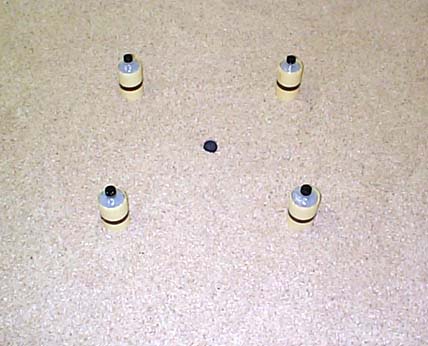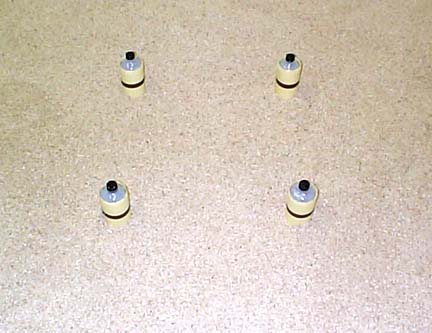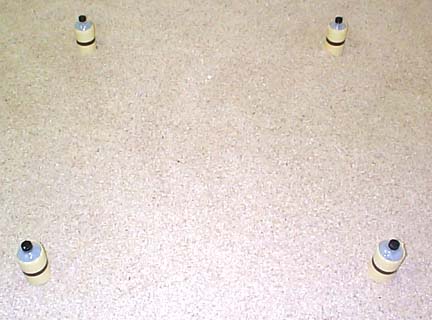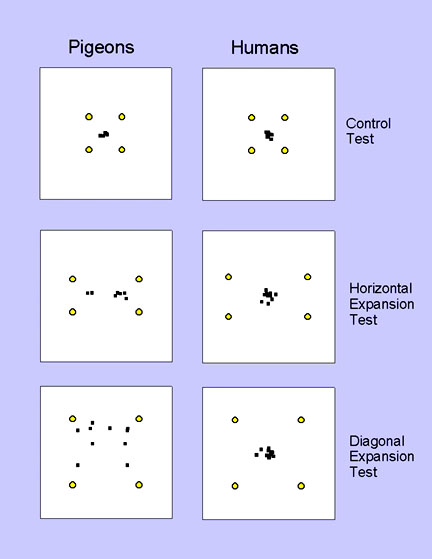Cheng
& Spetch Homepage
Next Section:
General laws
of learning: overshadowing, generalization, and peak shift
__________
|
VI. Use of Landmark Configurations
The next experiments based on the transformational
approach show that pigeons use the configuration of landmarks (Spetch,
Cheng, MacDonald, Linkenhoker, Kelly, & Doerkson, 1997).
|
Training Phase

In these experiments, the birds searched in an arena for hidden grain
located in the middle of four landmarks. The target location is shown by a black food dish in the figure, but
this food dish was buried in the sawdust after preliminary training. The entire array was moved about the arena from trial to trial during
training.
|
|
|
Transformation Test Phase

|
On control tests, both the food and
the dish were removed. |

On the expansion tests, the size of the landmark array was doubled, along
one dimension or along both dimensions.
|

The above show the peak area of searching. On control tests, pigeons searched accurately at the center of the
array. On expansion tests pigeons tended to search at locations that were
the correct distance and direction from one or two landmarks. Because the landmarks look identical, this shows that the birds must
have identified which landmark was which according to its position in the
array, thus using the configuration of the array to identify a landmark.
Humans were similarly tested, in a large outdoor field with taller
landmarks. The humans searched in the center both on control tests and when the
array was expanded. Humans appeared to be using the entire configuration of landmarks both
to identify landmarks and to determine where to search.These patterns of results were replicated, for both species, in touch-screen
tasks (Spetch, Cheng, & MacDonald, 1996; for an example of a touch screen task, see the section on
averaging)
In landmark-based search, an animal presumably uses some record of landmarks
in the area, and the relation of the target to these landmarks. Spetch
et al. (1997) claim that the animal has to do two different tasks. First,
it has to figure out which landmark is which, or more precisely, which landmark
in the world corresponds to each landmark in the record. It does no good
to search at the right distance and direction from the wrong landmark!
And then the animal has to figure out where to search in relation to some
subset of landmarks (possibly including all landmarks in the area). Figuring
out which landmark is which is called landmark matching, while figuring
out where to search with respect to one or more identified landmarks is
called search place matching. The pattern of results obtained by Spetch
et al. (1996, 1997) from pigeons suggests that the birds use the configuration
of an array for landmark matching, but not for search place matching.
|
|
Next Section: General laws
of learning: overshadowing, generalization, and peak shift
|

